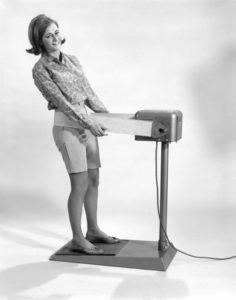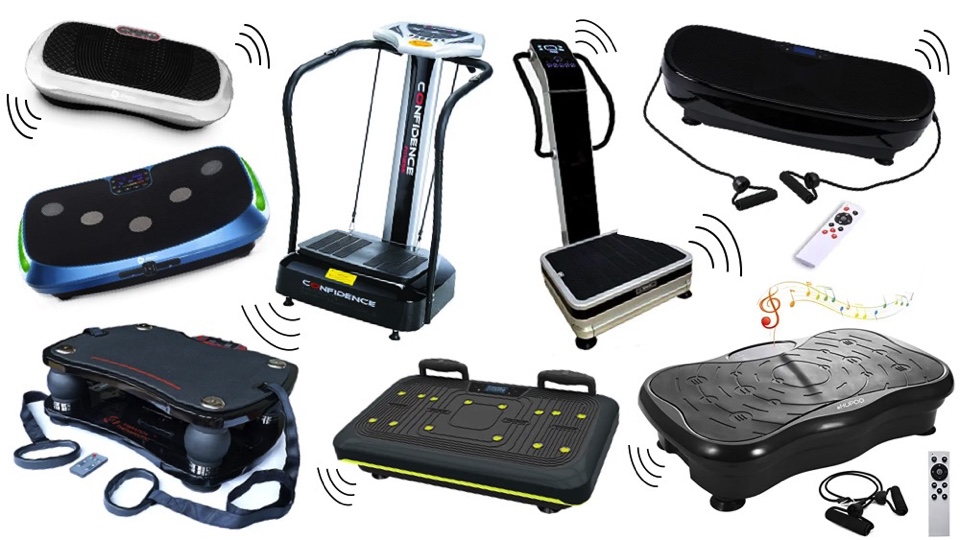No, that’s not a typo. I’m not trying to giggle my way into the New Year. I really want to jiggle. This all came about because of a three-week vacation to Ireland a couple of years ago. Midway through the trip, I realized that my Parkinson’s symptoms of painful stiffness and anxiety were less frequent than usual.
Wondering why, I started paying attention to our activities. As a triple amputee, I was bouncing around more in my wheelchair while being pushed over cobblestone streets, bumping up and down curbs, and off-roading on rough, rocky dirt trails. My husband’s approach to travel is that I should be pushed or pulled anywhere he can walk or hike. This makes for lots of interesting conversations punctuated by shrieks, squeals, and whoops from me as I hang on for dear life at times. More than once I yearned for a seat belt to keep from sliding out going down a steep path.
It was about this time my sister started extolling the benefits of whole body vibration (WBV)–the more formal term for jiggle machines–and the unit she had purchased. It made me laugh out loud as I recalled the jiggling machines of the 50’s and 60’s which claimed to melt fat away by hugging your hips with a vibrating belt.
I consulted Dr. Google hoping to find something that would explain or support the science of whole body vibration therapy. “Too Lazy to Exercise? Machines that Exercise for You, From Victorian Era to Now.” gave me a nice historical perspective. “I Worked Out on a 1950’s Fat Jiggling Machine and Here’s What Happened” had me laughing all the way through.
As a physician, I’ve always looked for scientific evidence to validate my healthcare decisions. However, as a person with Parkinson’s Disease, I find myself occasionally turning to therapies or concepts that haven’t been proved conclusively in an effort to minimize my symptoms or perhaps delay progression of the disease. Some of the encouraging articles I found are included below in the list of references. Recalling the three weeks of decreased symptoms, I decided to be my own one-patient case study and give WBV a try.
Back at my laptop, I entered my sit-at-home shopping mall, aka, Amazon. There were over 200 machines advertised from $84.99 to $4,699.00. I chose one, pushed the credit card button and voila…I was the proud owner of a machine costing about $150.00. It was love at first sight. My use is somewhat unorthodox. Because of my bilateral above knee amputations, I sit on the platform rather than stand. The first ten minutes I use the low speed settings and then push it up to a higher frequency for another five or ten minutes. Part of the time I just sit, part of the time I stretch and actively exercise. Mind you, this does not replace my regular exercise regimen. You can check out a list of some of the seated cardio video workouts I use on my resources web page
So there you have it. My unconventional, but helpful way of alleviating some of my Parkinson’s rigidity and anxiety. Feel free to email me things you’ve tried in order to minimize your symptoms.
REFERNCES
Passive Exercise:Whole Body Vibration and More.
Do Vibration Exercise Machines Work?
The Effects of Random Whole Body Vibration on Motor Symptoms in Parkinson’s Disease


Wow, Linda! Great discovery. I hope other persons with PD find this effective. I also found it interesting that someone in our memoir group used giggle for jiggle in their story.
I wish we had know about jiggling for Fred. Glad all is well
Linda, it’s nice to hear these funny old machines from the 50’s actually do something! It sounds as if they are accomplishing whole body massage. Great news that it brings relief on several levels😊
It looks like the machines have been improved since they first came out. I’m glad you are getting some relief along with jiggly laughter!
Me too!!
Reading your posts always improves my attitude about having Lupus. You are an amazing woman.
where’s the video?
I leave that to your imagination.
Linda, You always make me feel good especially about my right hand that shakes as if I had Parkinson’s though you learn to manage these things. My writing has saved me. I finished my first book and am on to the second (the one you heard). Love your writing and will keep reading. You made me laugh with your wheelchair ride in Ireland.
Your jiggle makes me giggle! Won’t add what Sid would say about Dr. Google. Happy 2020!
Sally